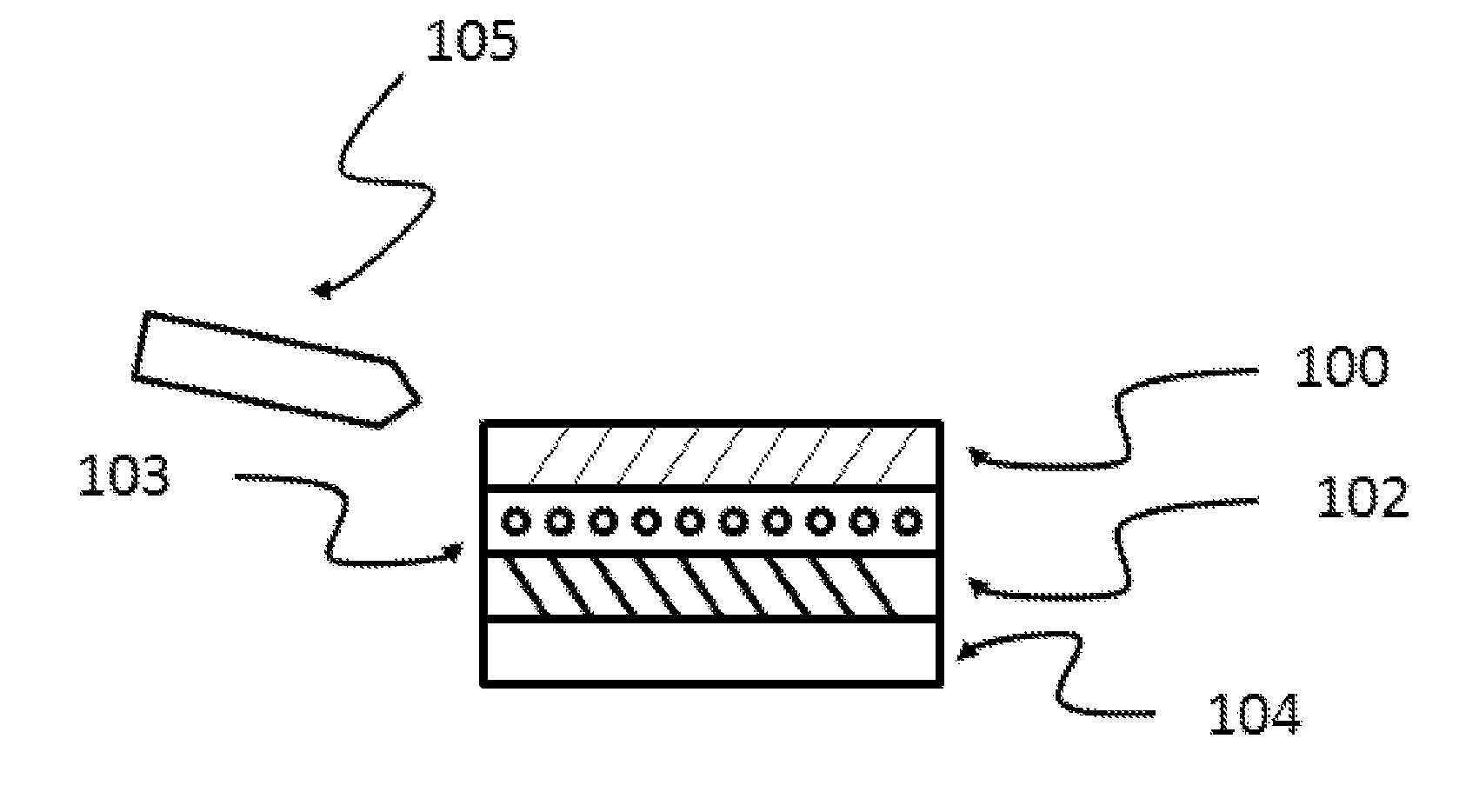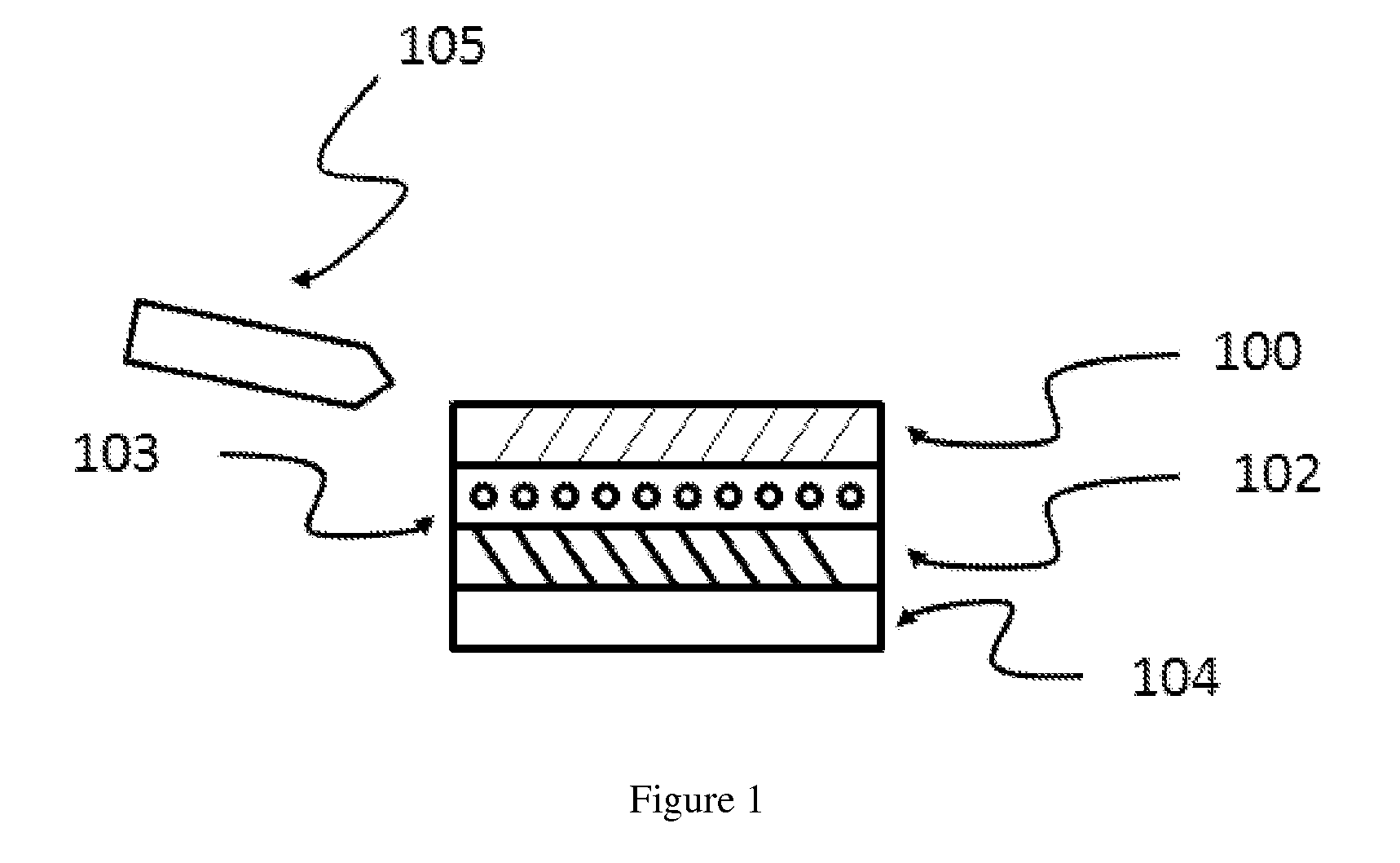Porous films by backfilling with reactive compounds
a technology of reactive compounds and porous films, applied in the direction of superimposed coating process, liquid/solution decomposition chemical coating, manufacturing tools, etc., can solve the problems of insufficient abrasion resistance for medium wear applications, limited wear resistance, and insufficient mechanical or environmental strength, so as to improve the properties of porous thin films. , the effect of improving durability and functionality
- Summary
- Abstract
- Description
- Claims
- Application Information
AI Technical Summary
Benefits of technology
Problems solved by technology
Method used
Image
Examples
example 1
Preparation and Characterization of Porous Films
[0109]Porous films were assembled from solutions containing polydiallyldimethyl ammonium chloride (PDAC, 100-200,000 MW, Sigma Aldrich) and silicon dioxide nanoparticles (SiO2, LUDOX® TM-50, WR Grace) using Layer by Layer spray deposition. An LbL spray deposition apparatus (modeled after the systems described in US Patent Application Publication No. US 2010 / 0003499 to Krogman et al., as well as Krogman et al., Automated Process for Improved Uniformity and Versatility of Layer-by-Layer Deposition, Langmuir 2007, 23, 3137-3141) was used to apply solutions directly to substrates. Films were deposited onto commercially available float glass (Asahi Glass Company). The resulting films exhibit a large degree of porosity, indicated by low reflectance. Using optical simulation software (TFCalc) to match experimentally determined reflectance curves, the refractive index of a film was determined to be 1.26. The ultra low refractive index is indic...
example 2
Backfilling of Porous Films
[0110]A reactive formulation containing tetraethoxyorthosilane (TEOS, Sigma-Aldrich), ethanol, deionized water (18 mega-ohm) and hydrochloric acid was prepared. The solvent was prepared by stirring DI water and adding dropwise 6M solution of hydrochloric acid in a glass bottle to a measured pH of 1.0. Then, 1.44 grams of ethanol was added for each gram of water. This bottle was then sealed, shaken aggressively, and allowed to rest overnight.
[0111]Some of this solution was then used as is (Formulation #3). The remainder of the solution was further diluted with ethanol to a desired concentration of TEOS. Two prepared solutions were diluted to ratios of 0.39:1 (Formulation #1) and 1.5:1 (Formulation #2) ratios with ethanol.
[0112]These solutions were applied dropwise to 6″×6″ samples of the porous film from Example 1, facing up. Approximately 3 milliliters of the solution was applied to the surface and examined to ensure that the entire porous thin film was co...
example 3
Characterization of Modified Porous Films
[0114]The samples prepared in Example 2 were subjected to a variety of testing methods. Reflectance curves were obtained using a contact UV-Vis reflectance system (F-10, Filmetrics) and transmission and haze measurements were obtained using a Hazegard (BYK). Improvement in mechanical strength was measured via test method ASTM D1003-07 for abrasion resistance. Untreated and treated porous films were subjected to abrasion via oscillation by 0000 steel wool weighted at 1100 g per square inch past the sample (Linear Abraser, Taber Industries) with transmission, haze and reflectance measurements measured after a certain number of abrasion oscillations.
[0115]The results for a 70 nm thick porous film are shown in Table 1. The increase in transmission (% T), compared with that of bare glass with no film, is due to the anti-reflective nature of the porous thin film. The % haze, typically less than 0.4%, following treatment with the reactive formulatio...
PUM
| Property | Measurement | Unit |
|---|---|---|
| thick | aaaaa | aaaaa |
| time | aaaaa | aaaaa |
| time | aaaaa | aaaaa |
Abstract
Description
Claims
Application Information
 Login to View More
Login to View More - R&D
- Intellectual Property
- Life Sciences
- Materials
- Tech Scout
- Unparalleled Data Quality
- Higher Quality Content
- 60% Fewer Hallucinations
Browse by: Latest US Patents, China's latest patents, Technical Efficacy Thesaurus, Application Domain, Technology Topic, Popular Technical Reports.
© 2025 PatSnap. All rights reserved.Legal|Privacy policy|Modern Slavery Act Transparency Statement|Sitemap|About US| Contact US: help@patsnap.com


